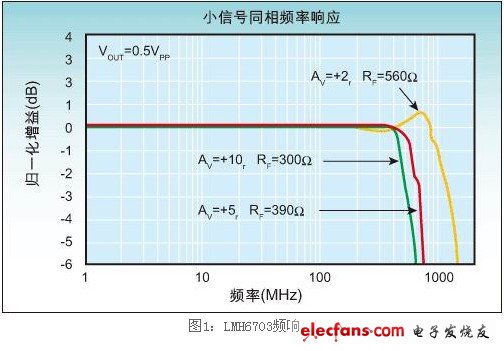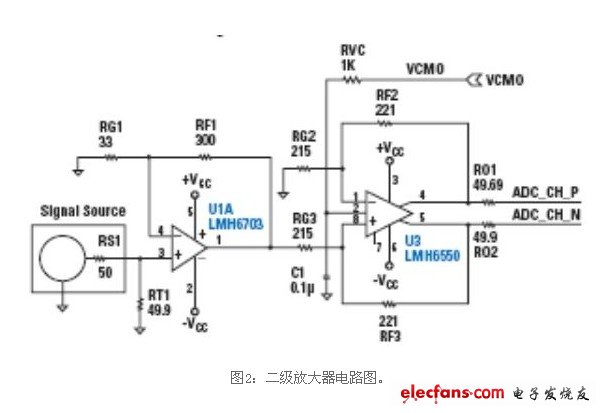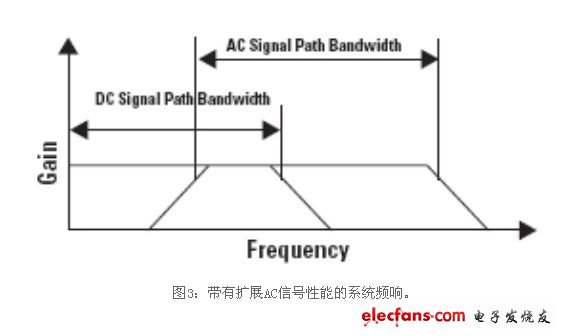High-speed switching systems, especially in the telecommunications field, allow analog-to-digital converter (ADC) input signals to be AC-coupled signals (by using transformers, capacitors, or a combination of both). But for the test and measurement industry, the front-end design is not so simple, because in addition to providing AC coupling capability, this application typically requires input signals to be DC coupled. Designing an active front end that provides good impulse response and low distortion performance (≥500MHz DC frequency) is challenging. This article provides several design ideas and recommendations for the analog front end for high performance ADCs for high speed data acquisition.

Using a differential amplifier is the preferred method of connecting a high frequency analog signal to the input of the ADC. Therefore, the first device that needs to be selected is the differential output op amp. When selecting such devices, there are two main considerations: the gain bandwidth product and the ability to set the op amp's common-mode output voltage from an external voltage. This is because it is important that the signal amplifier driving the ADC input sets the common-mode output voltage (VCMO) within the optimum ADC range. If these conditions are not met, the performance of the ADC will decrease significantly as the degree of inconsistency between the amplifier's VCMO and the ADC's optimal input common-mode voltage increases.

The main disadvantage of wideband differential op amps is that their gain is usually very limited and their gain levels may be preset internally. Depending on the application, it may be necessary to add a preamplifier to the design to meet the necessary gain requirements.
As for the preamplifier, a wideband operational amplifier should be used to meet the expected input frequency of the ADC. For systems with sampling rates up to 1 GSPS, this is equivalent to requiring an oversampling system with an input bandwidth of up to 500 MHz.
For an op amp that works with a large gain (such as AV = 10) and can maintain such a large bandwidth, it is equivalent to a 5 GHz gain bandwidth product (GBW). Due to the inherent trade-off between frequency response and gain inherent in this architecture, most voltage feedback amplifiers do not meet this requirement. However, current feedback amplifiers maintain a good relationship among these parameters because their performance is typically determined by the feedback resistor value within the op amp circuit. The operational amplifier LMH6703 is ideal for operation at high bandwidths with gain settings from 1 to 10. The device can be used with selected differential amplifiers to provide additional gain requirements in high bandwidth systems such as oscilloscopes and data acquisition cards. The frequency response of this amplifier is shown in Figure 1.

Automotive Connector
Automobile connector is a kind of component that electronic engineers often contact. Its function is very simple: in the circuit is blocked or isolated between the circuit, set up a bridge of communication, so that the current flow, so that the circuit to achieve the intended function. The form and structure of automobile connector are ever-changing. It is mainly composed of four basic structural components: contact parts, shell (depending on the type), insulator.
Automotive Connector
ShenZhen Antenk Electronics Co,Ltd , https://www.antenkconn.com